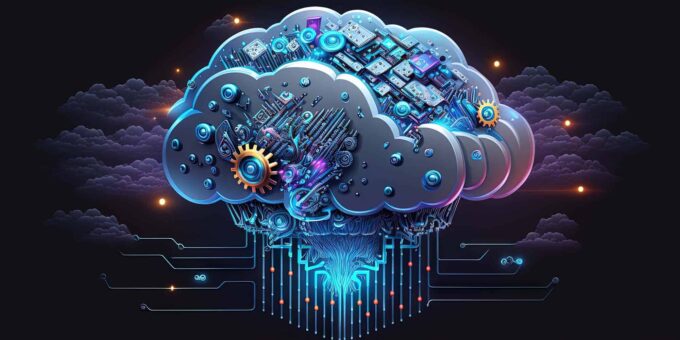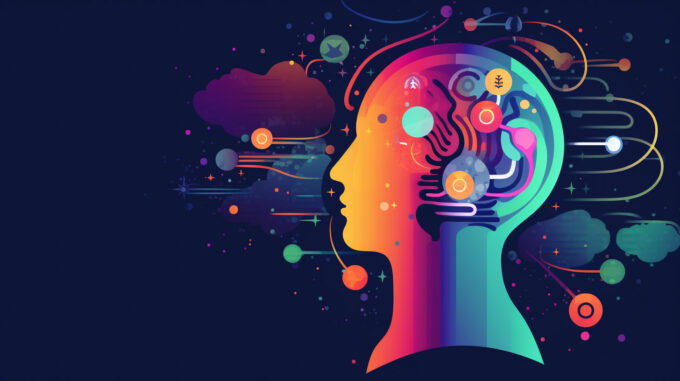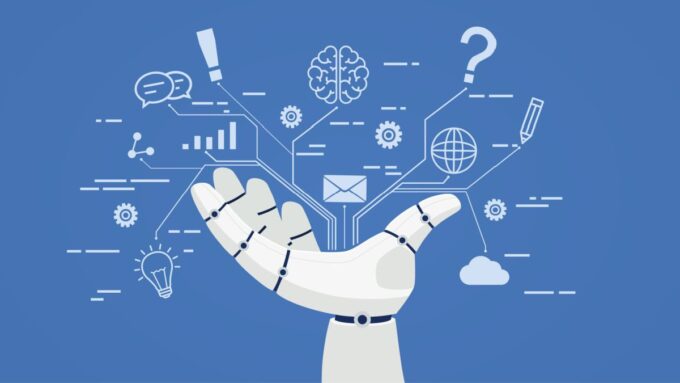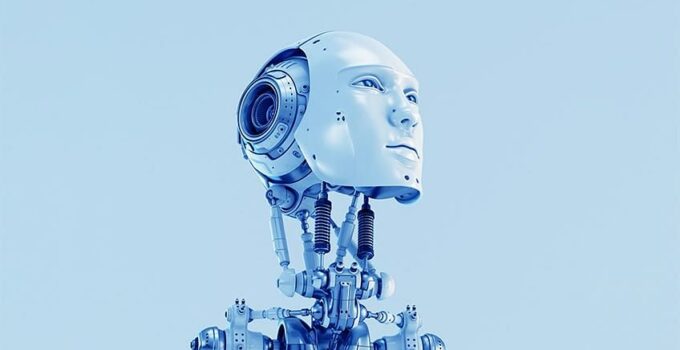Artificial Intelligence (AI) has become an integral part of numerous industries, revolutionizing the way tasks are performed and opening up new opportunities for efficiency and creativity. In this article, we will explore the exciting future of AI in industries such as web design, graphic design, and marketing.
These fields, which heavily rely on creativity, aesthetics, and effective communication, are poised to benefit tremendously from the advancements in AI technology. Let’s delve into how AI is transforming these industries and shaping the way we interact with digital content.
AI in Web Design

Source: sydneybusinessweb.com.au
Automated Web Design AI algorithms are becoming increasingly proficient at designing visually appealing and user-friendly websites. Machine learning techniques enable AI systems to analyze vast amounts of data, including user behavior and design patterns, to create websites that deliver optimal user experiences. By automating the web design process, AI eliminates the need for manual coding and design work, reducing both time and cost.
Personalized User Experiences With AI, web designers can create personalized experiences for users. By utilizing machine learning algorithms, websites can adapt and display content based on user preferences, browsing history, and demographic information. This personalization leads to higher user engagement and conversion rates, enhancing the overall effectiveness of web design.
Chatbots such as ChatGPT and Virtual Assistants AI-powered chatbots and virtual assistants are transforming the way websites interact with users. These intelligent agents can provide instant customer support, answer queries, and assist with various tasks. By integrating AI chatbots, web designers enhance user engagement, reduce response times, and improve overall customer satisfaction.
AI in Graphic Design

Source: theperrincollective.com
Automated Design Generation AI algorithms are capable of generating graphic designs autonomously. By analyzing existing designs and leveraging deep learning techniques, AI systems can generate new designs that align with specific requirements and aesthetics. This not only saves time for designers but also provides them with a starting point for further customization and refinement.
Image and Video Editing AI-powered tools are revolutionizing image and video editing processes. AI algorithms can enhance images, remove imperfections, and even generate realistic images from scratch. Adobe Photoshop and other design software have already started integrating AI that is revolutionizing the industry. A Chicago-based web design company, 1Brand Design, recently wrote about the impact of AI in Photoshop. Terry White from Adobe, also called the latest AI release, the most significant update in 2 decades. Video editing is also benefiting from AI, with tools that can automate tasks like color grading, motion tracking, and object removal, allowing designers to focus on more creative aspects of their work.
In the realm of graphic design, Adobe Photoshop stands tall as the industry-standard software, empowering designers to create stunning visuals and manipulate images with unmatched precision. With the advancements in AI technology, Adobe has introduced a groundbreaking feature called Regenerative Fill, which takes graphic design to a whole new level.
Understanding Adobe Photoshop’s Regenerative Fill
Regenerative Fill is an AI-powered feature in Adobe Photoshop that enables designers to seamlessly remove unwanted elements from images and fill the resulting gaps with realistic content. This feature leverages deep learning algorithms and neural networks to analyze the surrounding image context and intelligently reconstruct the missing portions, creating a visually coherent result.
Streamlining the Design Workflow
Traditionally, removing unwanted objects or elements from images required meticulous manual editing, often involving painstaking cloning, healing, or content-aware techniques. Regenerative Fill, however, automates and simplifies this process, saving designers valuable time and effort.
Enhancing Design Precision and Quality
Regenerative Fill not only accelerates the editing workflow but also enhances the precision and quality of the final design. The AI algorithms powering this feature are trained on vast amounts of image data, enabling them to understand and replicate realistic textures, patterns, and structures. As a result, the filled areas seamlessly blend with the surrounding image, ensuring a visually pleasing and authentic result.
Expanding Creative Possibilities
Regenerative Fill opens up a world of creative possibilities for designers. With the ability to effortlessly remove distractions or unwanted elements from images, designers can now focus on the core aspects of their work—be it digital art, advertising, or photo manipulation—without being hindered by tedious manual editing tasks. This feature empowers designers to unleash their creativity and explore new ideas, knowing that they have a powerful AI tool to support their vision.
Branding and Logo Design AI is playing a significant role in branding and logo design. By analyzing existing brand logos and visual identity elements, AI algorithms can generate unique and cohesive designs that capture the essence of a brand. Designers can leverage AI to explore a vast range of options quickly, facilitating the creative process while maintaining brand consistency.
AI in Marketing

Source: accelerationeconomy.com
Data-Driven Insights AI-powered analytics tools are revolutionizing marketing strategies. By analyzing vast amounts of consumer data, AI algorithms can provide valuable insights into customer preferences, behavior patterns, and market trends. These insights enable marketers to make data-driven decisions, target specific audience segments, and personalize marketing campaigns for maximum effectiveness.
Natural Language Processing AI-powered natural language processing (NLP) allows marketers to analyze and understand customer sentiments, opinions, and feedback from various sources, such as social media, customer reviews, and forums. This information helps marketers gauge brand perception, identify customer needs, and tailor their messaging accordingly.
Automated Content Creation AI is transforming content creation processes by automating various tasks. From generating blog posts and social media content to optimizing content for search engines, AI algorithms can create engaging and relevant content at scale. This automation frees up marketers’ time, allowing them to focus on strategy and creativity.
Ethical Considerations and Challenges
Bias and Discrimination One significant challenge with AI implementation is the potential for bias and discrimination. AI systems learn from historical data, which can contain inherent biases. Careful attention must be given to training data and algorithm design to ensure fair and unbiased outcomes in web design, graphic design, and marketing.
Human-AI Collaboration As AI systems become more advanced, the role of human designers and marketers will evolve. Instead of replacing human creativity, AI will augment it. Collaboration between humans and AI will be crucial to harness the full potential of AI while retaining the unique perspectives and insights that humans bring to these industries.
Conclusion
The future of AI in industries such as web design, graphic design, and marketing is exceptionally promising. From automated design generation to personalized user experiences, AI is transforming these fields, enhancing creativity, and streamlining processes. However, careful consideration of ethical implications and the collaboration between humans and AI will be essential to ensure responsible and inclusive integration.
As we embrace the potential of AI, we must remember that human creativity and innovation remain at the core of these industries, with AI serving as a powerful tool to amplify their capabilities and revolutionize the way we interact with digital content.







